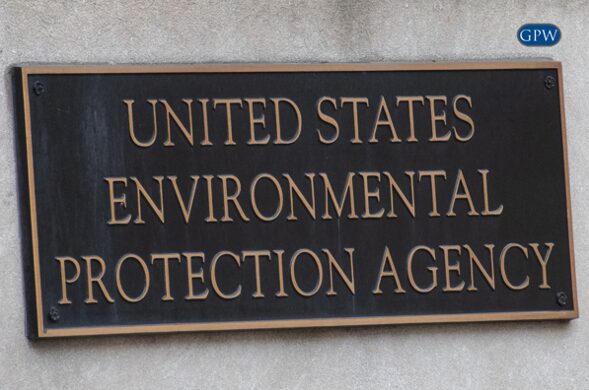Despite the known dangers of asbestos exposure, asbestos is still legal in the United States. However, it
 is heavily regulated within different organizations in the government. Different agencies have their own laws and regulations for asbestos control to maintain exposure levels in the workplace, home, and environment.
is heavily regulated within different organizations in the government. Different agencies have their own laws and regulations for asbestos control to maintain exposure levels in the workplace, home, and environment.
OSHA
The Occupational Safety and Health Administration (OSHA) is an organization that protects and assures employees they are working in a safe and healthy environment. Specific exposure regulations legally enforceable under OSHA aim to protect workers regularly exposed to asbestos in the construction industry, general industry, and shipyards. Work areas must be consistently monitored, assessed, and decontaminated. Annual training, medical surveillance, and protective gear are required for those exposed to higher permissible exposure limits. Additionally, employers are required to document asbestos exposure monitoring and keep medical surveillance and training records on file for up to 30 years.
EPA
The Environmental Protection Agency (EPA) was created to protect the environment and the health of humans by regulating substances that could potentially be harmful to both. The EPA determines acceptable asbestos levels in which humans can be exposed, how to remove asbestos safely from a facility, and what you are required to do by law if you discover asbestos. The EPA has created numerous laws that outline safety procedures for infrastructures that may contain asbestos and companies that make any sort of asbestos-containing product. The Asbestos Model Accreditation Plan provides guidelines on training requirements for accrediting asbestos professionals, and Superfund sites were created by the EPA to clean up hazardous asbestos waste sites that remain abandoned in the United States. Other regulations like the Workers Protection Rule, the National Emission Standards for Hazardous Air Pollutants, and the Asbestos Ban and Phase Out Rule are all EPA-funded to not only protect workers and the environment, but to create a future without asbestos exposure risks.
CPSC
The Consumer Product Safety Commission (CPSC) regulates consumer products that could be potentially harmful. While asbestos may be a known carcinogen, products in the United States are still allowed to contain some level of asbestos, as long as the fibers are not in danger of becoming airborne. §1304 of the Consumer Product Safety Commission declares that any patching compounds that contain intentionally-added free- form asbestos that can become airborne is banned. This applies to patching used to cover and seal holes, cracks, joints found in the walls, trim, and ceilings of buildings. The patching that is sanded down and distributed for personal use, sales or for consumption is also banned.
CDC
The Centers for Disease Control (CDC) and the National Institute for Occupational Safety and Health (NIOSH, a section under the CDC) work to establish tactics that prevent workplace injury by asbestos by investigating the relationship between those who were exposed to asbestos and if the person has an asbestos-related illness. Guidelines developed by NIOSH and the CDC recommend certain approaches if you find yourself handling asbestos such as isolating contaminated areas, wearing protective gear, using wetting agents to reduce exposure, and following disposal methods in accordance with OSHA and EPA standards.
The Mine Safety and Health Administration (MSHA) establishes and enforces mine safety and health standards to reduce health hazards, accidents, and to promote safer working conditions. Permissible exposure limits for asbestos for the MSHA are the same as OSHA’s (is 0.1 fibers per cubic centimeter of air over an eight-hour time period, or 1.0 asbestos fiber per cubic centimeter of over a 30-minute period) and is often determined by phase-contrast microscopy (PCM). This optical technique is the primary method used by MSHA to analyze air samples because it is relatively quick and cost effective.
These government rules and regulations were established to reduce overall asbestos exposure and eliminate the potential development of the life-threatening cancers such as mesothelioma and lung cancer. During National Cancer Prevention Month, take the time to learn more about the process of limiting asbestos exposure – whether it is in your home, workplace, or even the environment. Knowing safety procedures and protocols arms you with the knowledge to keep yourself and your family safe from the dangers of asbestos.
Sources:
U.S. Department of Labor “OSHA©Fact Sheet – Asbestos”(January 2014). [Link]
U.S. Environmental Protection Agency, “Asbestos Laws and Regulations” (October 14, 2015). [Link]
Centers for Disease Control and Prevention, “Asbestos,” The National Institute for Occupational Safety and Health (NIOSH) (March 7, 2016). [Link]
Consumer Product Safety Commission, “Part 1304 – Ban of Consumer Patching Compounds Containing Respirable Free-Form Asbestos.” [Link]
Douglas B. Murphy, Ron Oldfield, Stanley Schwartz, Michel W. Davidson, “ Introduction to Phase Contrast Microscopy,” Microscopy U The Source for Microscopy Education, (2016). [Link]



